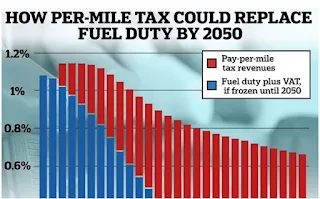Dear 222 News viewers, sponsored by smileband
Inside the Twisted Plan of an Essex Cult Member to Abduct a Coroner
In a quiet corner of Essex, a chilling story emerged this month involving a cult member’s elaborate plot to abduct a local coroner. The bizarre scheme, allegedly rooted in conspiracy theories and intense mistrust of authorities, unraveled as police discovered the suspect’s detailed plans, sparking fears about the influence of cults in the UK.
The Suspect and Cult Ties
The suspect, whose name remains withheld due to ongoing investigations, is a member of a small, fringe cult based on unconventional beliefs. Described as a reclusive individual, they were reportedly drawn to the group during the pandemic, finding solace in its ideas about alternative spiritualism, self-sufficiency, and deep-seated distrust of government institutions.
Reports indicate that the cult, which remains unnamed by authorities, has a history of promoting anti-establishment ideas, particularly regarding the legal and medical systems. The suspect is believed to have fully embraced the group’s radical teachings, to the extent of plotting to abduct a public official, a plan that would bring him infamy within the cult’s ranks.
The Target: An Essex Coroner
The target of the suspect’s sinister plan was an Essex-based coroner, a professional deeply respected in the community for handling sensitive cases with dignity. Coroners play a crucial role in investigating unexplained deaths, a responsibility that occasionally exposes them to criticism or even hostility from conspiracy-driven individuals who question official findings.
Sources close to the investigation suggest that the suspect viewed the coroner as a representative of a system they believed to be corrupt and secretive. The cult’s ideologies apparently led the suspect to fixate on the coroner, with conspiracy theories inflaming their suspicions about how death investigations were conducted. Law enforcement officials suspect that the plot to abduct the coroner stemmed from a misguided attempt to “expose” what the suspect saw as hidden truths, a fixation reinforced by the cult’s rhetoric.
Details of the Plot
In a disturbing twist, the suspect meticulously planned the abduction, gathering surveillance on the coroner’s routine and movements. Investigators uncovered notebooks containing hand-drawn maps, daily schedules, and the names of individuals linked to the coroner’s office. Authorities are still trying to piece together the timeline of events, but it’s clear that the suspect had a specific date and method for executing the plan.
The scheme was foiled, however, when a member of the cult, who had grown uneasy about the escalating nature of the group’s activities, tipped off the police. Investigators moved quickly, apprehending the suspect before any harm could come to the coroner. The concerned cult member is reportedly now cooperating with authorities, shedding light on the inner workings of the cult and its role in radicalizing the suspect.
Cult Influence and Dangerous Ideologies
Cults often draw individuals who feel isolated, offering a sense of belonging and purpose. However, as in this case, the beliefs and activities promoted by such groups can sometimes lead to extreme behavior. Experts warn that some cults prey on vulnerable individuals, leading them to accept increasingly radical beliefs that can culminate in acts of violence.
The cult in question reportedly advocates for “truth-seeking” missions that challenge established institutions, including legal and medical professionals. For the suspect, this meant targeting someone they viewed as a symbol of the “deception” perpetrated by these systems. The abduction plot reveals just how dangerously far some individuals are willing to go when radicalized within these environments.
Aftermath and Community Reactions
The thwarted plan has left the Essex community on edge, prompting authorities to heighten security for officials involved in public service roles. The police and local government have reassured residents, emphasizing that swift action and community vigilance are critical in preventing similar incidents. The suspect is currently in police custody, facing charges related to attempted abduction, stalking, and conspiracy.
The episode has sparked a broader conversation about the reach and influence of cults in the UK, as well as the mental health support available to individuals who may be at risk of radicalization.
Attached is a news article regarding the coroner abduction by cult members
https://www.bbc.co.uk/news/articles/c5ym02kj146o.amp
Article written and configured by Christopher Stanley
<!-- Google tag (gtag.js) --> <script async src="https://www.googletagmanager.com/gtag/js?id=G-XDGJVZXVQ4"></script> <script> window.dataLayer = window.dataLayer || []; function gtag(){dataLayer.push(arguments);} gtag('js', new Date()); gtag('config', 'G-XDGJVZXVQ4'); </script>
<script src="https://cdn-eu.pagesense.io/js/smilebandltd/45e5a7e3cddc4e92ba91fba8dc








